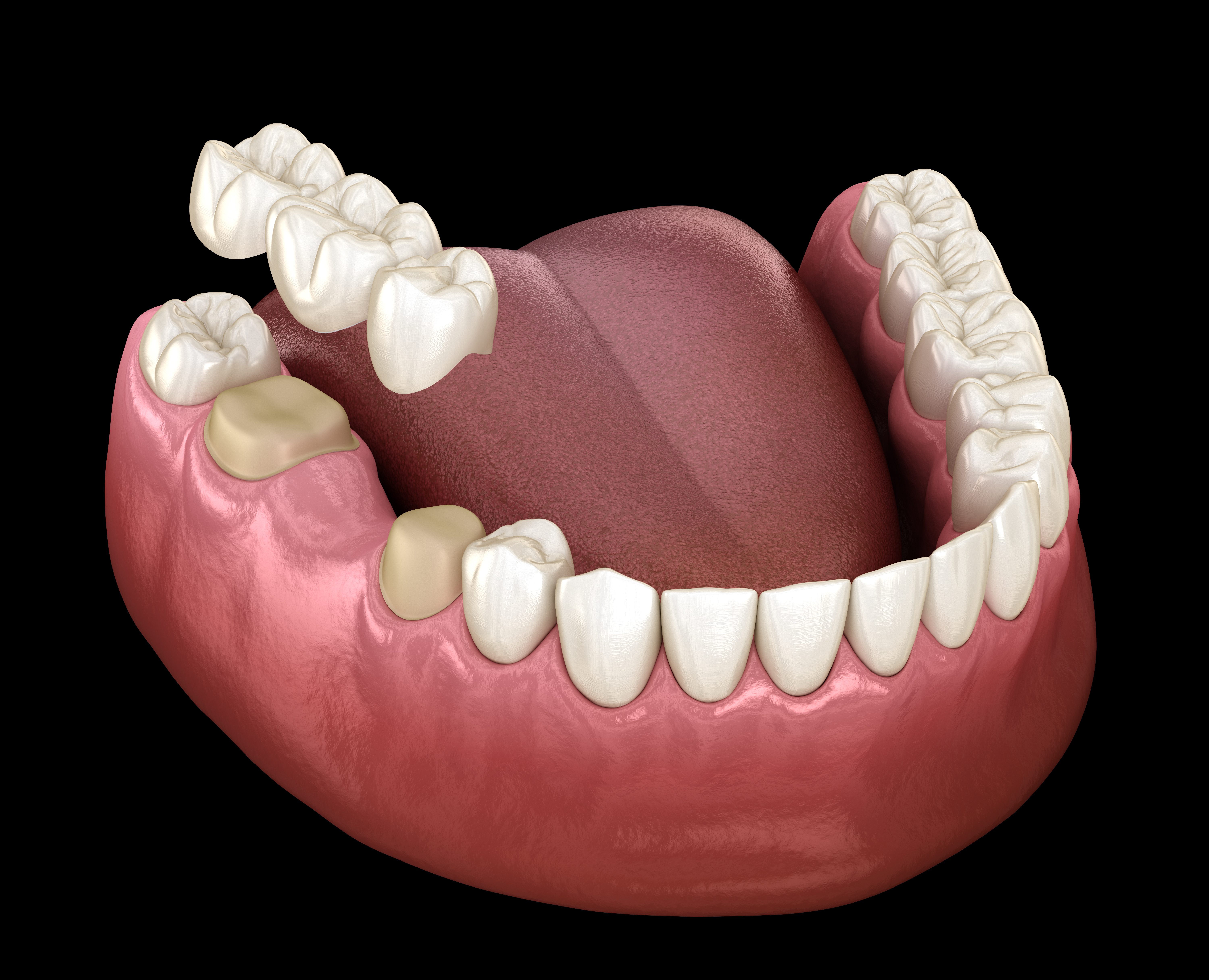Porcelain Fixed Bridges
Home » Porcelain Fixed Bridges
A dental bridge is a custom-made, new artificial tooth made of porcelain that replaces one or more missing teeth, and is supported by adjacent teeth or by a dental implant. A dental bridge or artificial tooth looks completely natural, as it is tinted to match the colour of your existing teeth and is attached from the gumline to look like a real tooth.

Dental Bridges
Dental bridges are a special type of dental restoration appliance that helps to bridge gaps between teeth. These gaps can be caused by a number of things including missing teeth, or the natural space the patient is b
Woman wearing orthodontic silicone trainer. Invisible braces aligner. Mobile orthodontic appliance for dental correction.
orn with between their teeth. Commonly, a dental bridge will have a pontic (a prosthetic tooth) attached to it to replace a tooth that has come out for whatever reason.
By bridging these gaps in the patient’s mouth, the normal functions of the mouth, including eating and speaking, can be restored.
Why are Dental Bridges Used?
Dental bridges are one of the most common types of restoration. Rather than undergo extensive dental surgery to have permanent implants put in, some patients prefer to have a bridge and a prosthetic tooth put in place. The process is much simpler and less invasive than the implants, and the end result is the same, a restored tooth, and the restored ability to chew and speak properly.
As well, some of the less obvious benefits of this type of restoration include a reduced risk of tooth decay and bone loss, less likelihood of other teeth drifting into the empty space, and improved gum health at the site.
What are Dental Bridges Made Of?
Dental bridges can be made of several different types of materials that include the following:
- Gold
- Silver
- Metal
- Alloy
- Porcelain
You and your dentist will decide which materials are best used based on your personal dental history.
Are There Different Types of Dental Bridges?
There are three main types of dental bridges in use today:
Traditional Bridge
This type of bridge is generally used when the teeth surrounding the area are natural teeth (as opposed to implants or onlays). The bridge will attach to the natural teeth around the gap, and usually will have a prosthetic tooth attached. This is the most common type of bridge.
Maryland Bridge
This type of bridge involves creating prosthetic teeth and gums, then attaching the bridge to existing teeth.
Cantilever Bridge
For some patients with missing teeth, there may not be a lot to work with. In the case where a bridge is needed but there is only one tooth adjacent to the gap, a Cantilever bridge can be used. This is the least common type of bridge, because it can cause a number of problems to existing teeth including putting extra pressure on the remaining natural teeth.
Are Dental Bridges Expensive?
While dental bridges can be somewhat expensive, most dental benefits plans will cover most if not all of the cost. In most cases, bridges are put in place to restore a patient’s natural ability to talk and eat, and aren’t usually used for cosmetic purposes, so it is highly likely that your provider will offer coverage. Please feel free to discuss pricing with team members at Cambie Marine Gateway Dental.
How long will Dental Bridges Last?
Dental bridges these days are designed to last for years and years to come. As long as you continue to follow your regular dental hygiene practices, and see your dentist for regular checkups, you shouldn’t have to worry about having the bridge replaced for at least 15 to 20 years.

